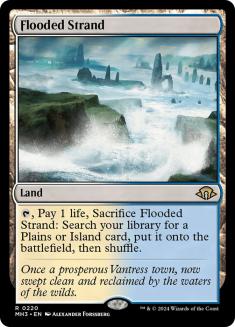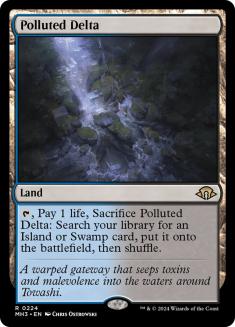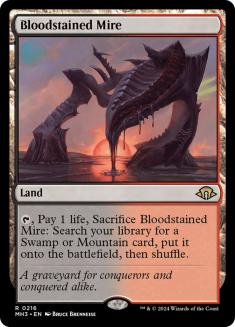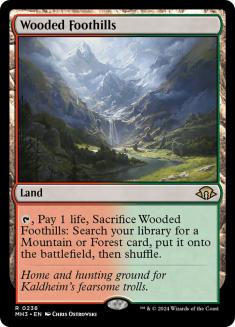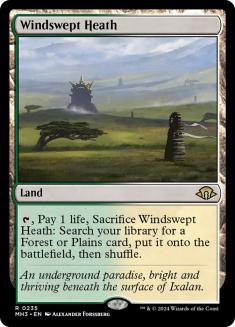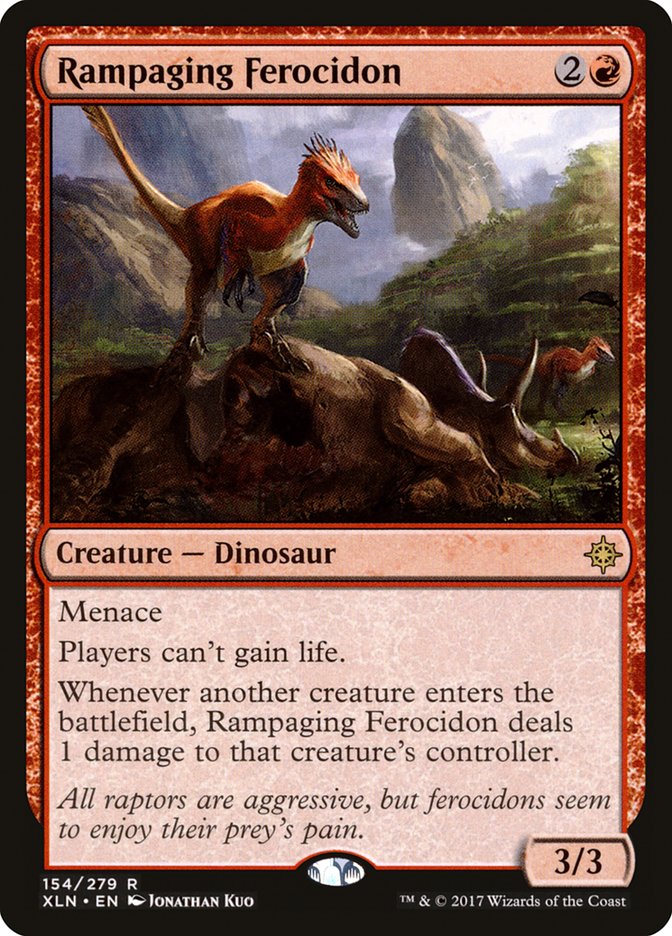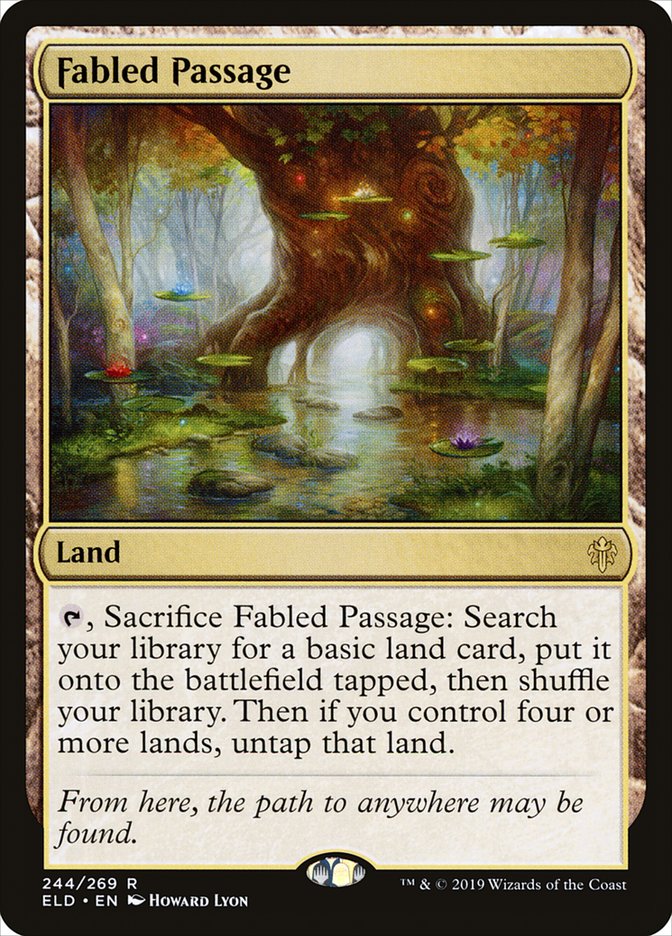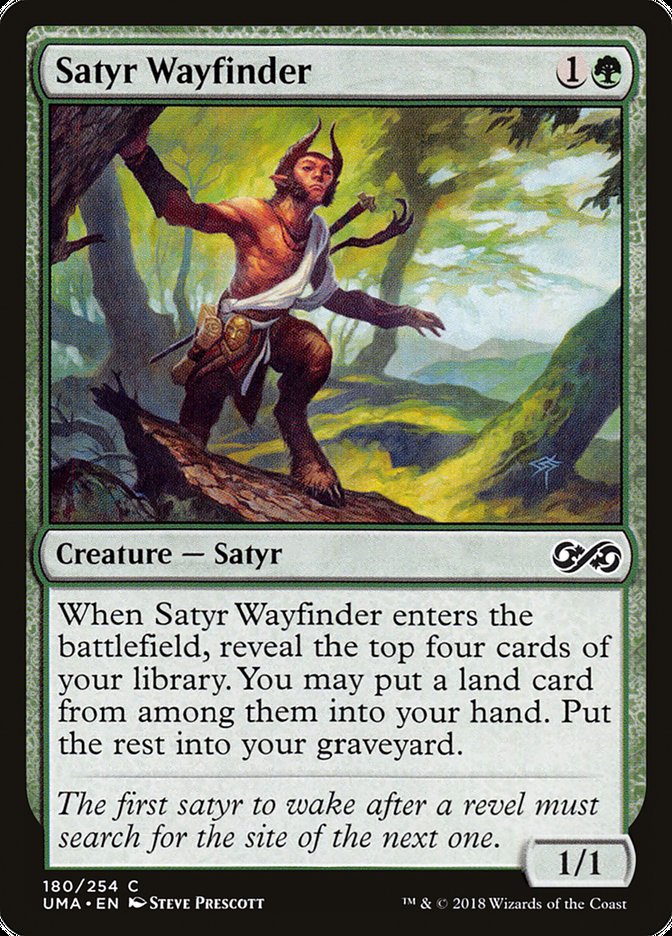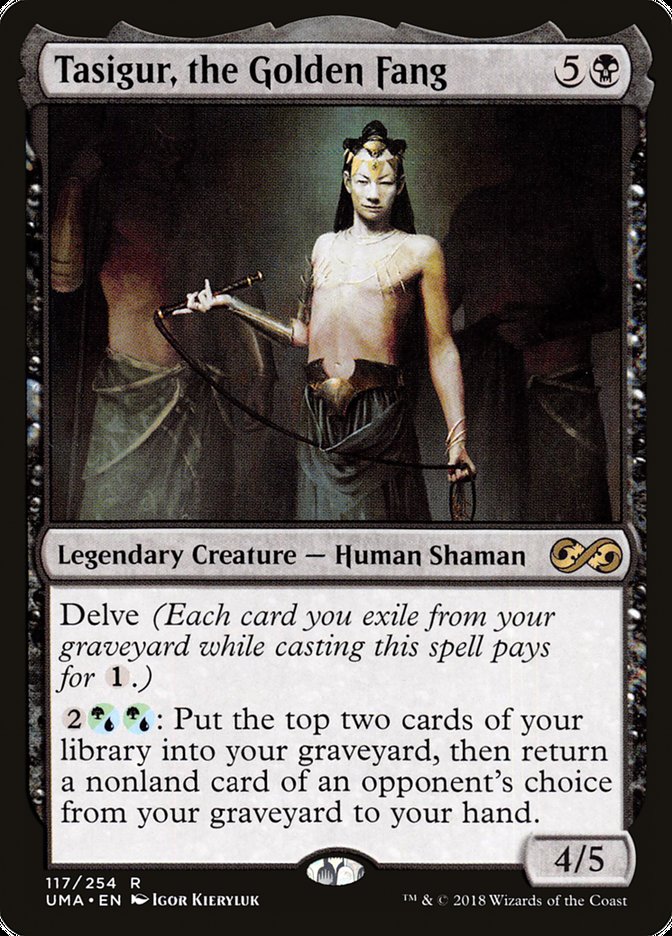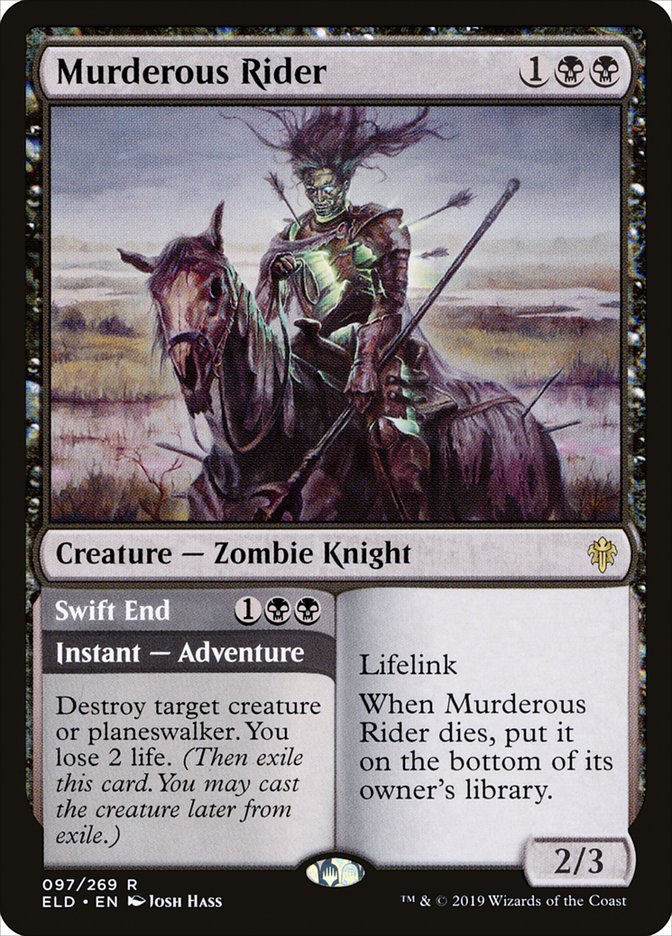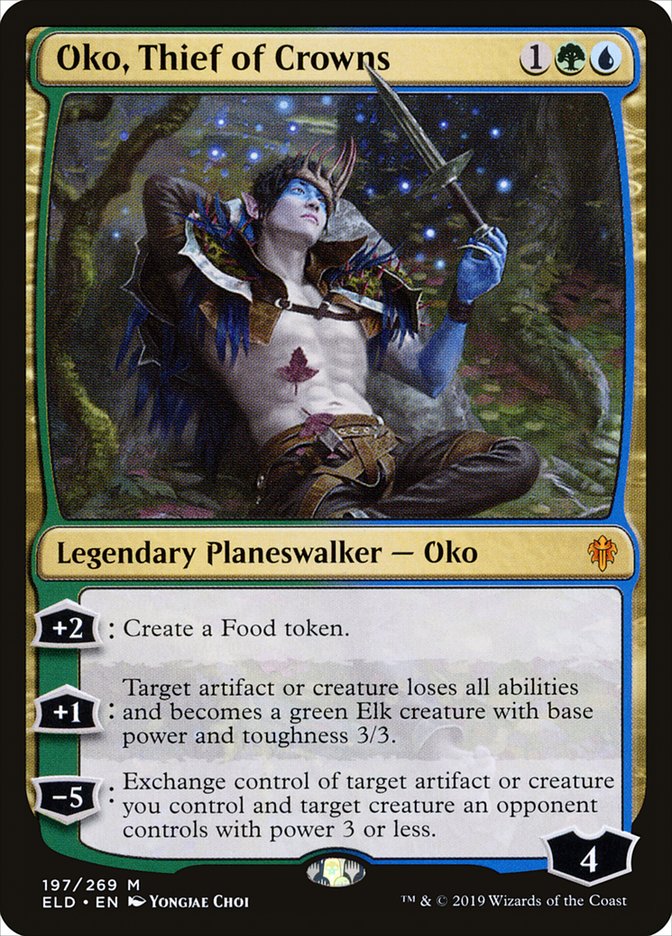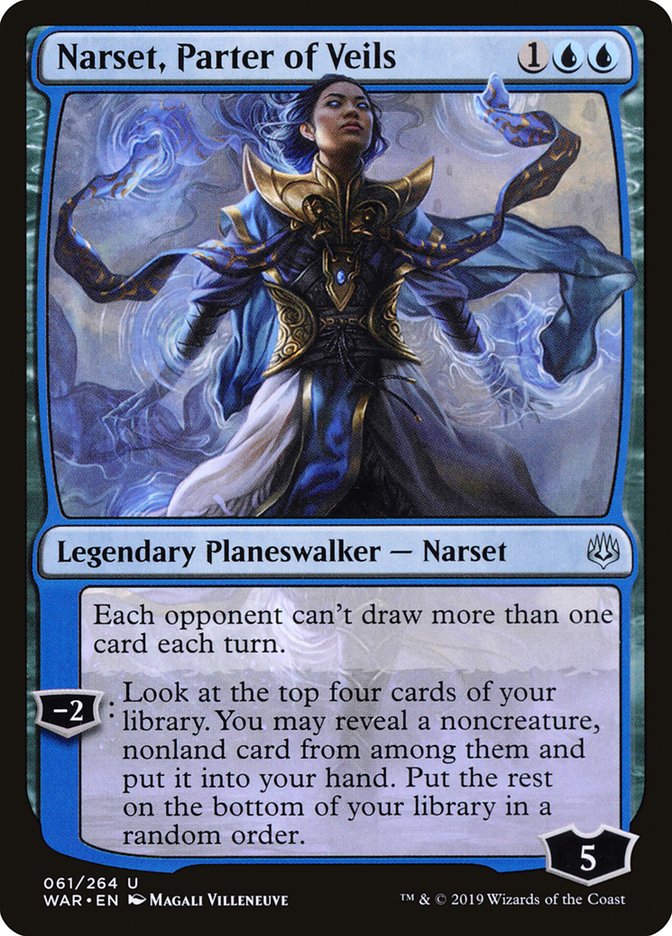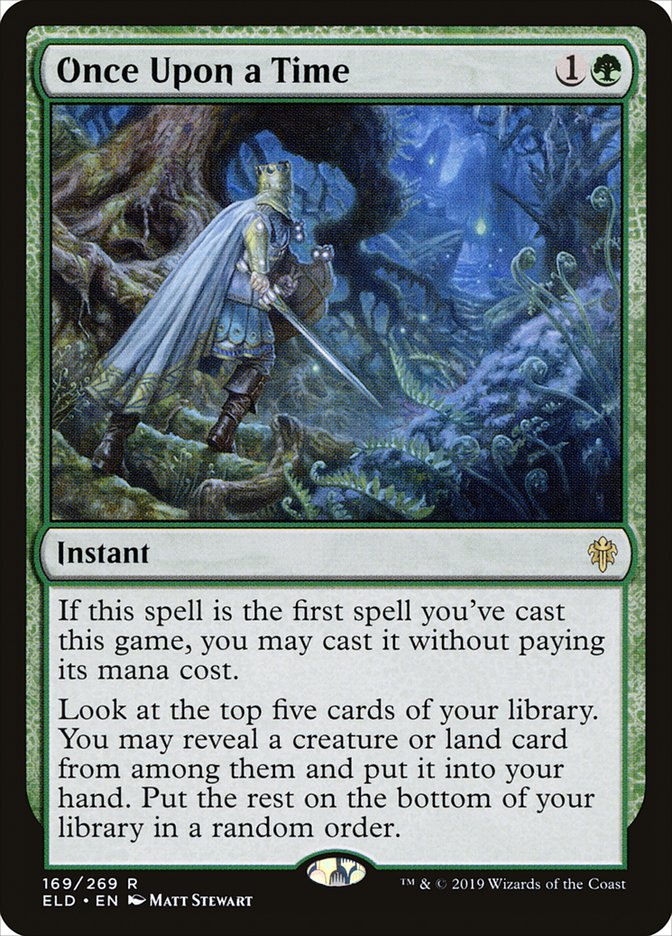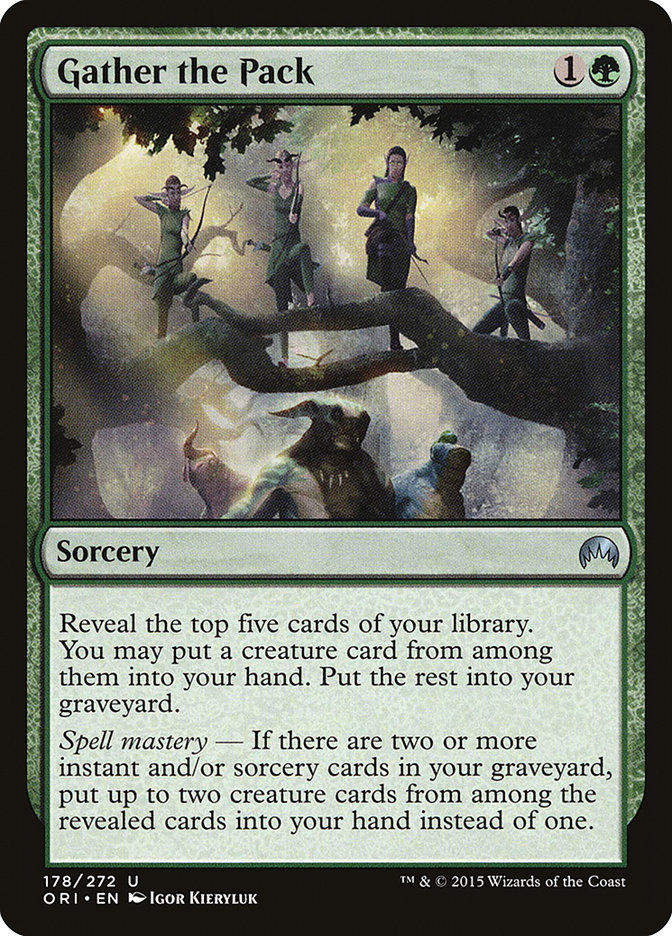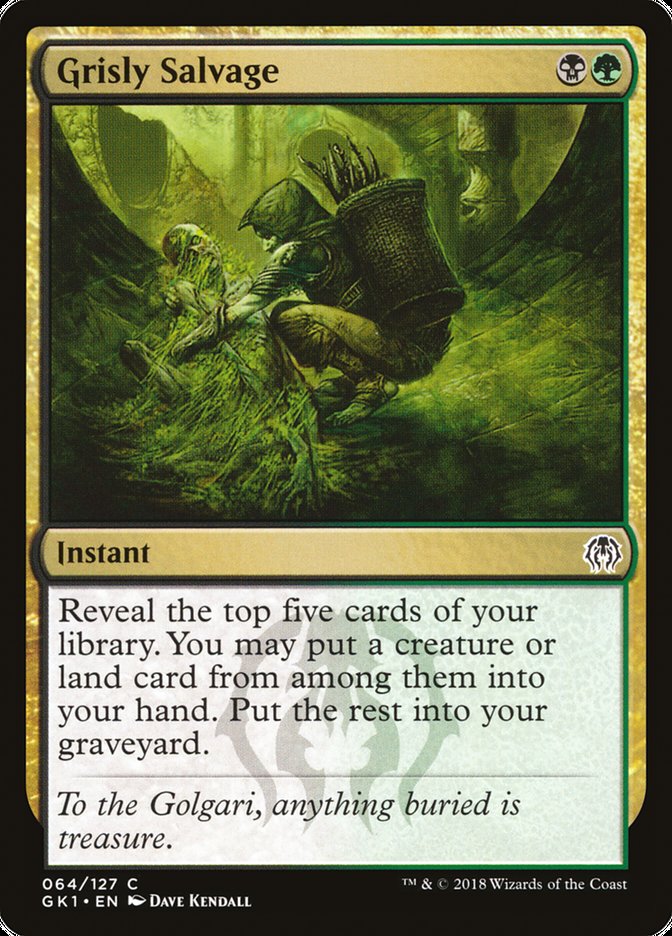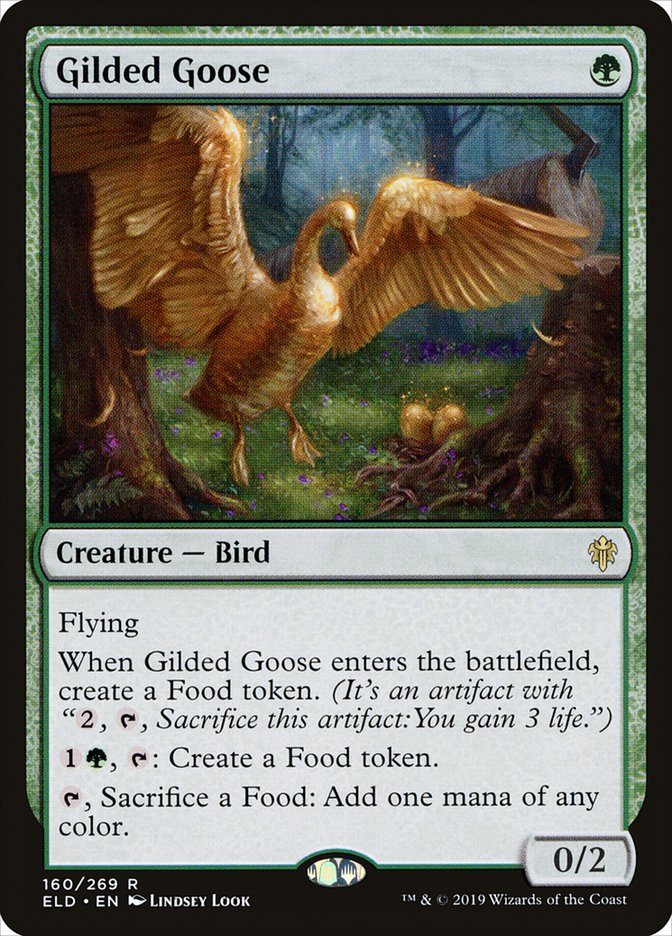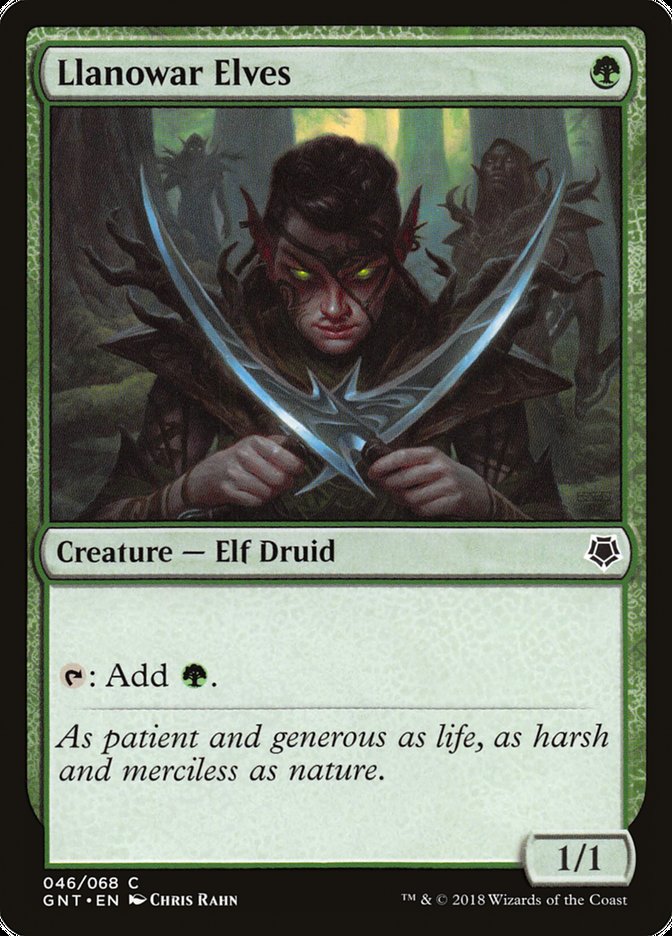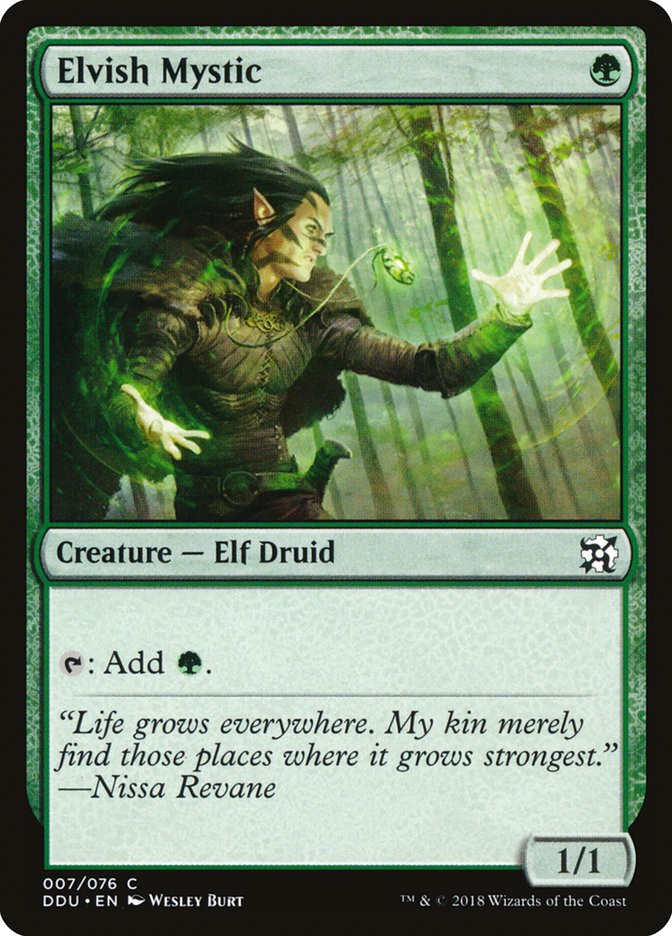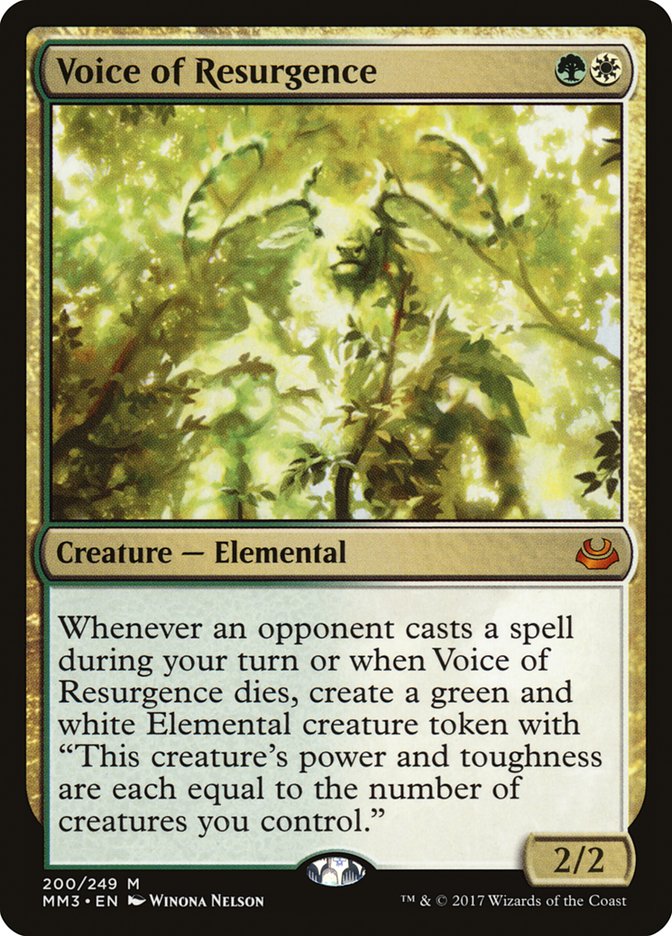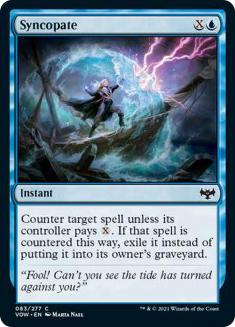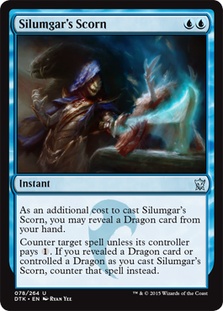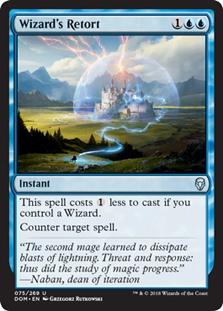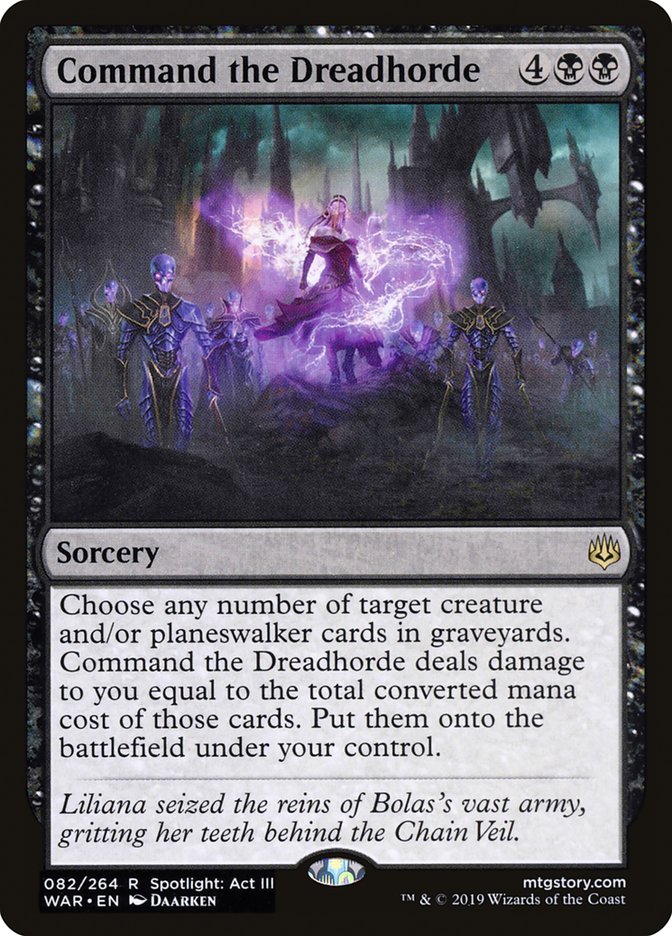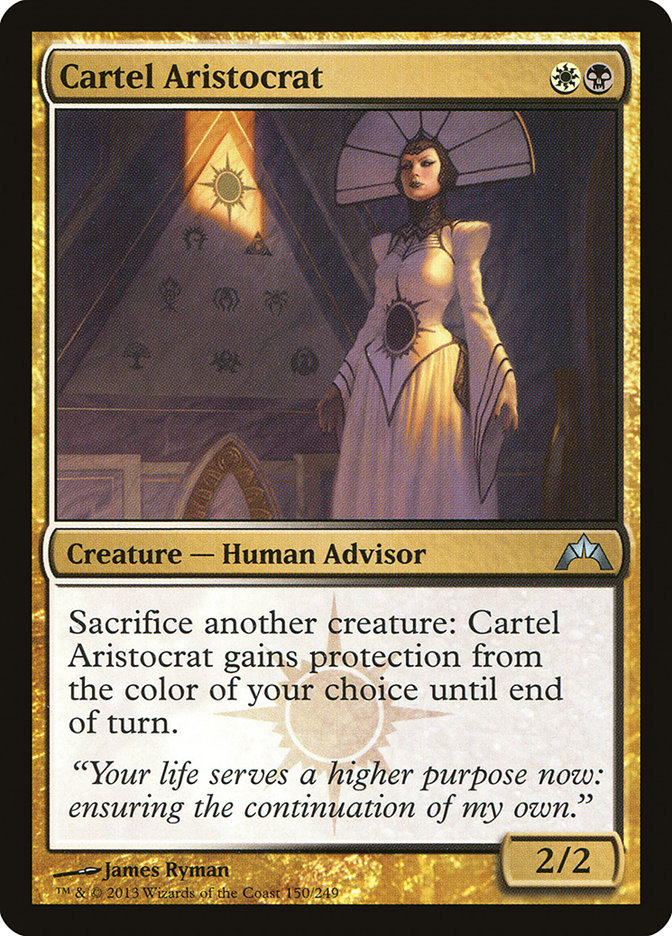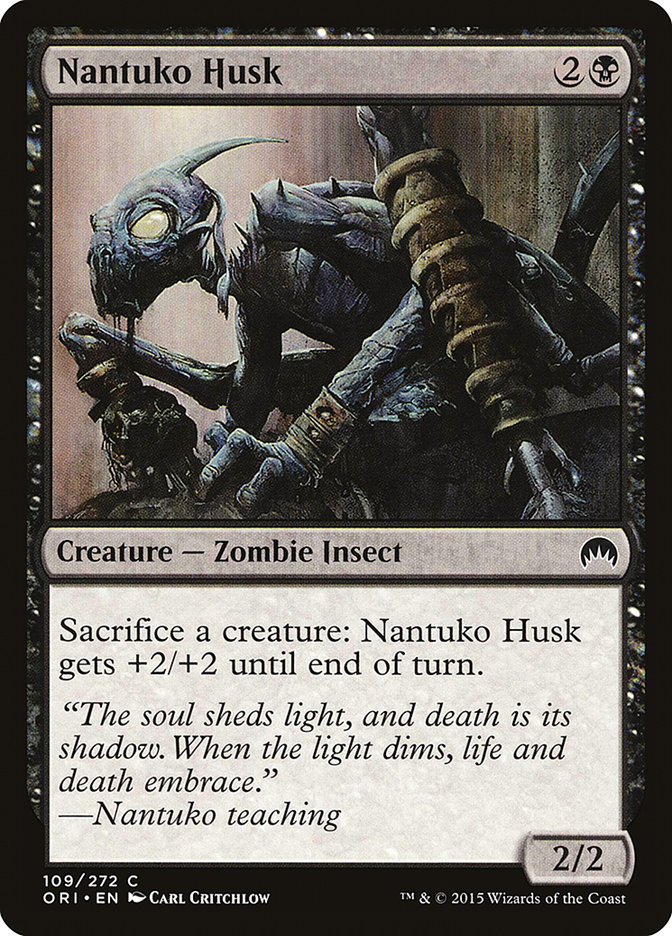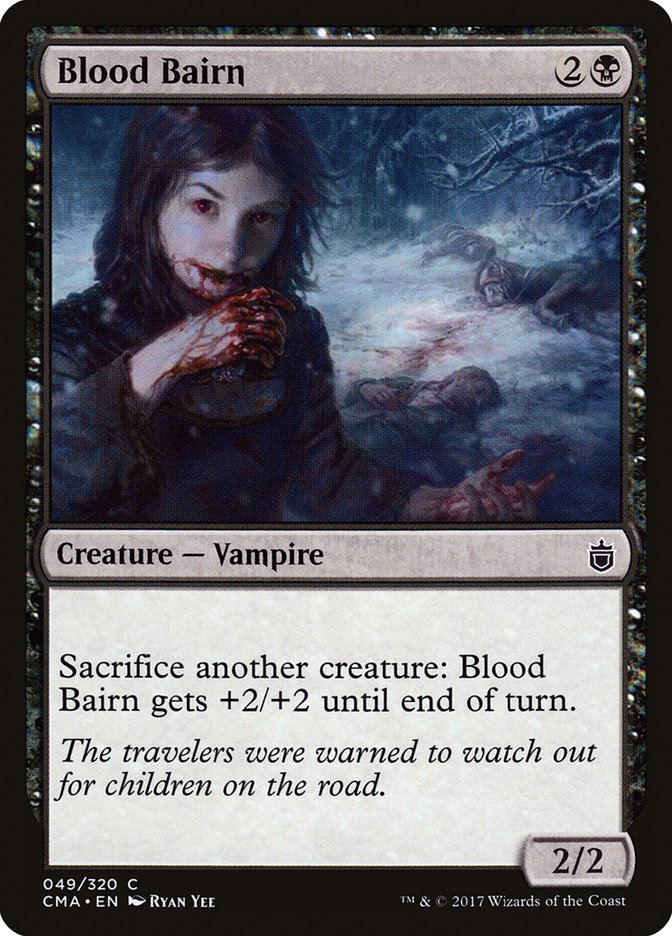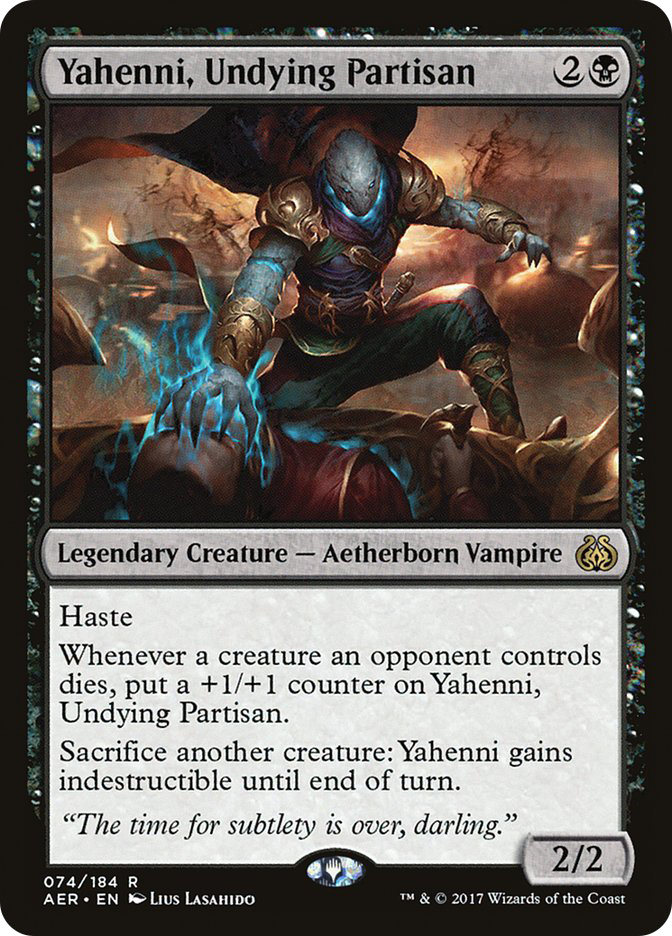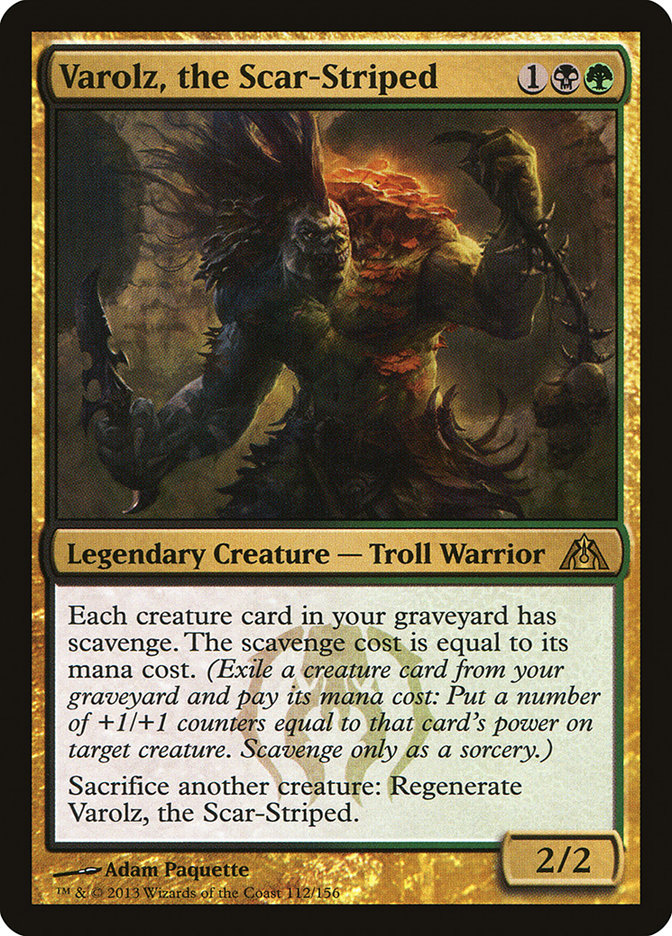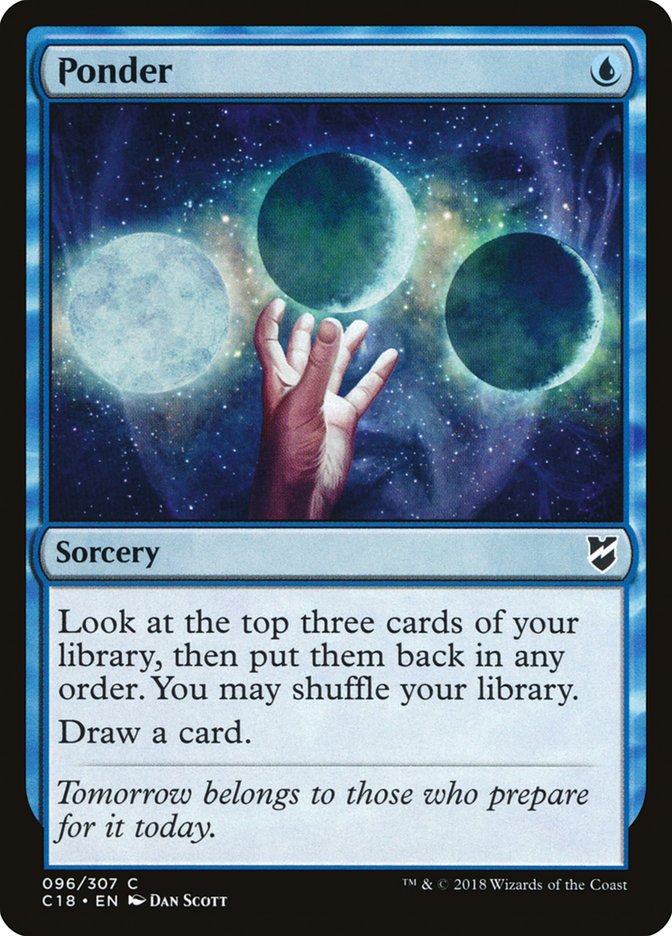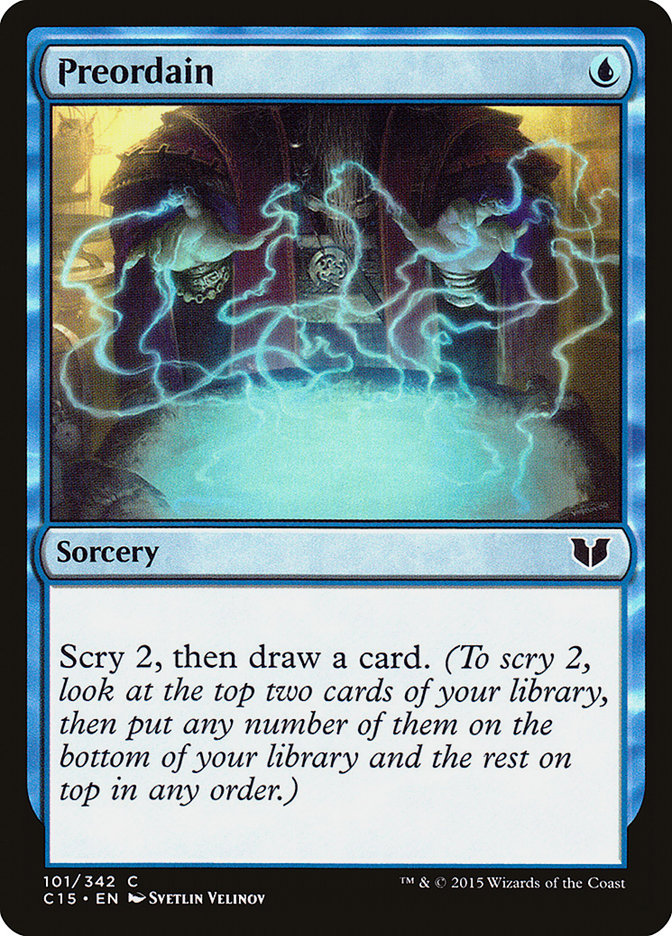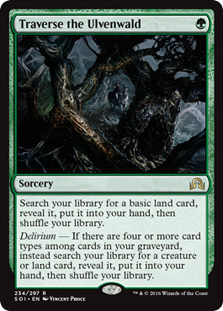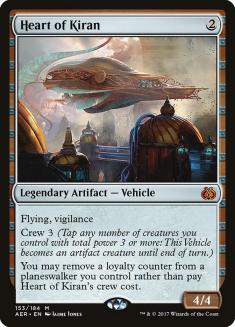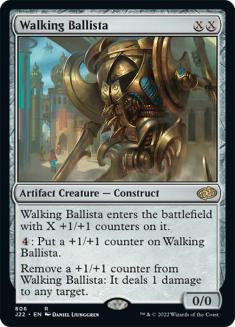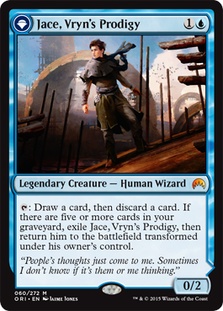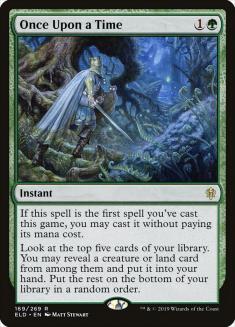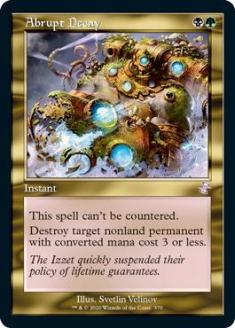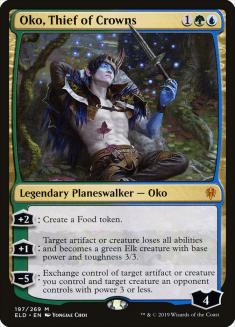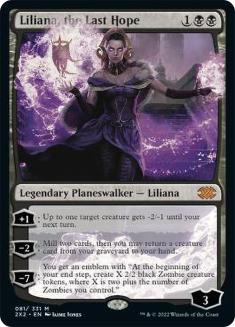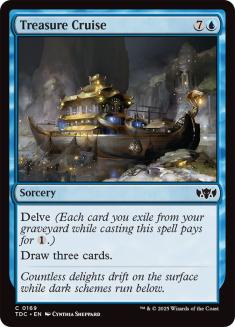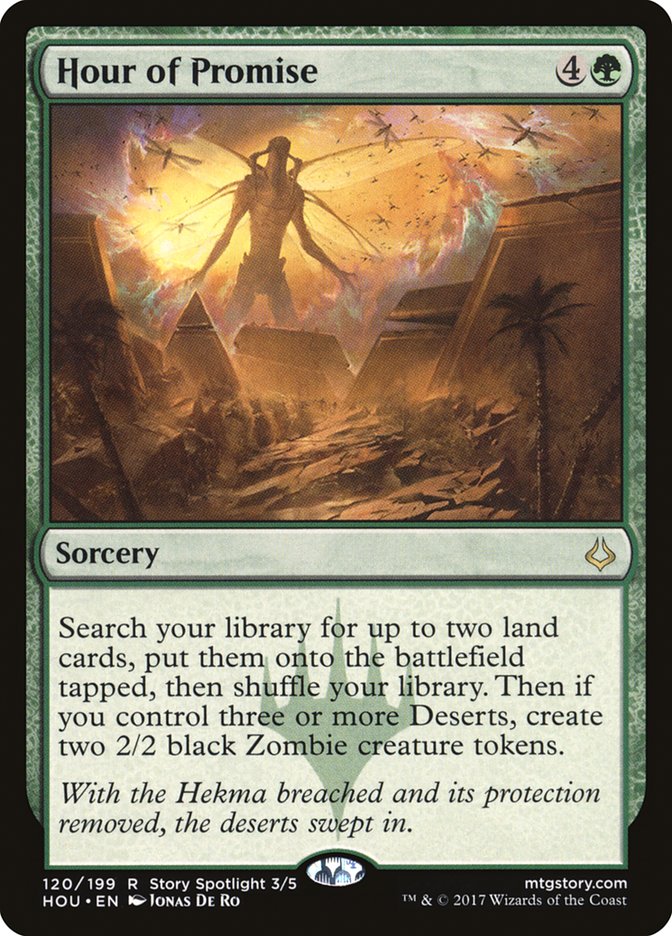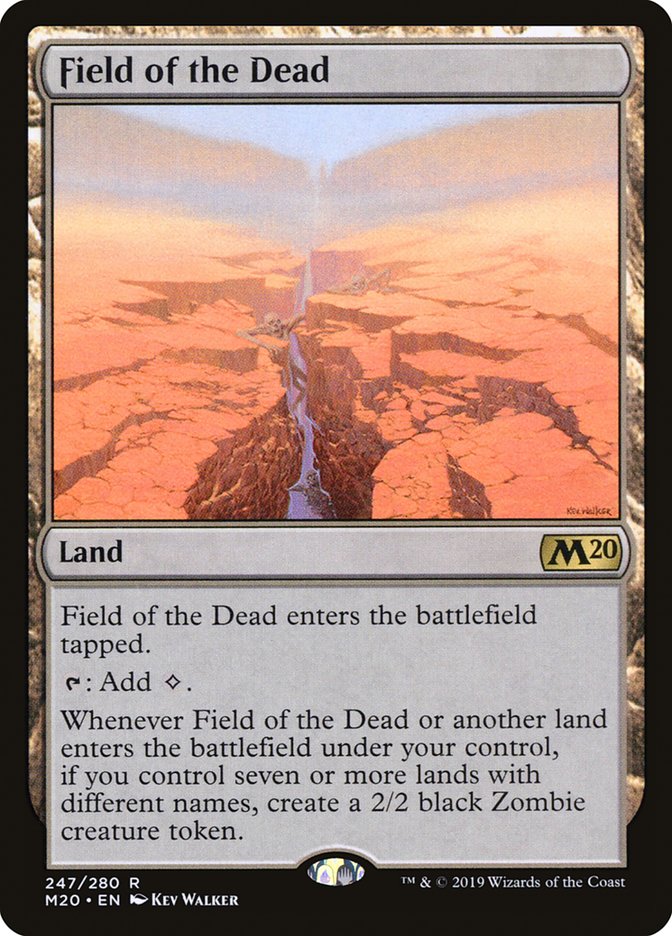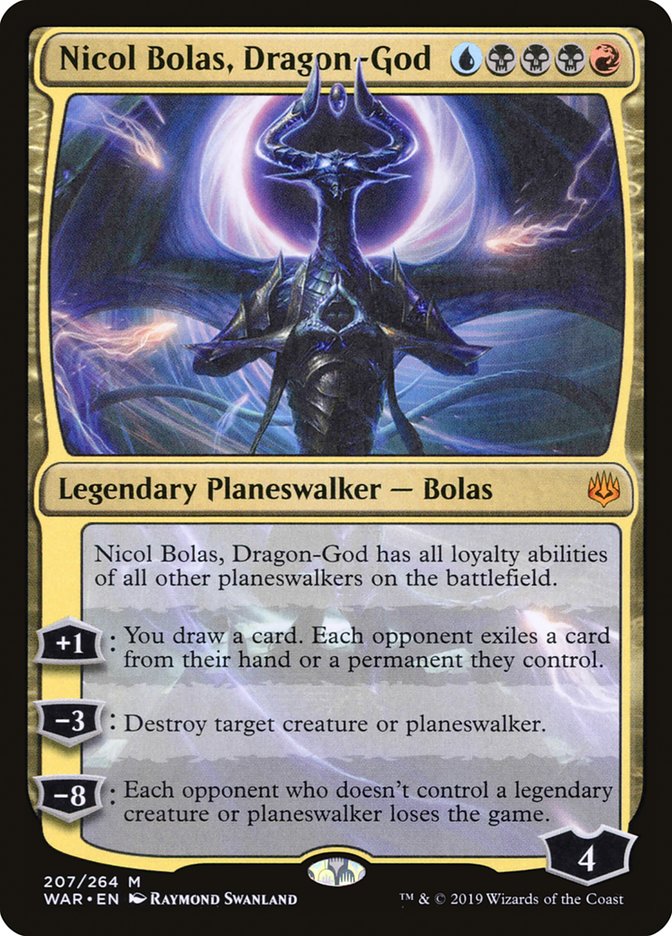The creation of a new format is one of the most fun and frankly wild experiences for Magic deckbuilding. What is the format really about? What do people think is good out the gate? What’s good against that? What’s good against that? What kind of threats are there? What kinds of combos? What kinds of removal? What kinds of disruption? What’s possible with the mana?
Magic’s new format, Pioneer, is a wide-open new landscape with seven years’ worth of cards legal, including a whole bunch of cards that were banned in one format or another. With that many cards legal, it’s understandable that a lot of people have started to approach the format from the position of looking at those cards banned in other formats.
I’d like to start somewhere else.
It’s not that I think Deathrite Shaman is definitely the defining card of the format or anything. Far from it, in fact. It’s just that in trying to get a handle on the format, we’ve got to start somewhere, and to me, it seems like the format is built around the fetchlands:
Yes, the five fetchlands that are banned.
One of the most important pillars of any format is what manabases are possible. One of the all-time greats, Hall of Famer Zvi Mowshowitz, really dug into this philosophy years ago, finally put words to it, and it’s stuck with me ever since. The fetchlands being banned is so monumental of a shift compared to any format this large that we’ve seen in a very long time, it’s going to take a lot of new perspectives, new understandings, to master how mana even works in this format. A lot of basic assumptions are going to have to be questioned and possibly discarded.
This brings us back to Deathrite Shaman.
You see, banned lists sort of imply an inherent power level; however, as anyone who has played Rampaging Ferocidon can tell you, that’s not the whole story.
Deathrite Shaman got banned in a format with fetchlands, and even that was pretty controversial. Without fetchlands, Deathrite Shaman has applications, but it’s not at all clear it’s even good.
For instance:
Creatures (18)
- 4 Deathrite Shaman
- 4 Satyr Wayfinder
- 4 Siege Rhino
- 1 Tasigur, the Golden Fang
- 2 Tireless Tracker
- 3 Murderous Rider
Planeswalkers (3)
Lands (22)
Spells (17)

This list dedicates a whole lot of card choices largely to supporting Deathrite Shaman; but are we getting our money’s worth?
Fabled Passage is no fetchland; don’t get it twisted. Entering the battlefield tapped for the first three turns of the game is huge. The one saving grace is that its ability to find a third color is more useful than might be obvious (compared to the plethora of good two-color lands, obviously not compared to fetching up shocklands). It’s not actually the easiest thing to build a good three-color manabase in this format anyway.
Like Deathrite Shaman, Tireless Tracker’s value is largely considered with fetchlands in the equation. While the card is probably gonna do just fine, it’s probably going to be overrated by a lot of people at first as we get a better understanding of how much Tireless Tracker brings to the team, versus how much fetchlands brought.
One of the best midrange threats we could ask for, if you’re looking to play fair, Siege Rhino has one of the best rates out there for a fair threat.
Satyr Wayfinder is probably going to be a really important card in the format, as it’s among the most mana-efficient ways to stock your graveyard (and certainly, if you value the battlefield presence, the chump blocker). While it does look good in this list, it’s not like Deathrite Shaman and Tasigur, the Golden Fang are actually the most powerful things you can do with a stocked graveyard.
One thing I do particularly like about Satyr Wayfinder in this list is how effectively it crews Smuggler’s Copter.
Speaking of formerly banned cards, Smuggler’s Copter is really efficient at a baseline, but also helps stock the graveyard itself. It’s also kind of nice to be able to convert the extra land from Satyr Wayfinder into gas.
See, if you’re gonna stock your graveyard, I love doing so with cards like Liliana, the Last Hope. She’s super powerful on her own and just a great card. That she happens to also self-mill isn’t even what you’re being charged for. You just get that on top. This definitely seems to me to be one of the more powerful cards for the format’s onset.
I know it might seem crazy to play more Murderous Riders than Fatal Pushes, but hear me out. First of all, Murderous Rider seems great in the format. It’s not clear the two life matters much, and so many of the best cards are planeswalkers.
Murderous Rider is also a creature, so it can be rebought with Liliana, the Last Hope or searched for by cards like Once Upon a Time.
Once Upon a Time is pretty sketchy to be legal, to begin with. I mean, that’s a lot of selection. However, its mana-fixing is particularly valuable in Pioneer for helping pull three-color decks together. When you can also use it to find powerful cards like Siege Rhino, Tasigur, and Murderous Rider, you’re really getting somewhere. There’s just no way this isn’t one of the most dangerous cards in the format.
So, what does this have to do with Fatal Push?
Well, Fatal Push might turn out to be the best removal spell in the format, just so we’re clear. Costing one is just about the best superpower you can have, and it does benefit from other people’s cards being cheaper on the average (as you’d expect in a more powerful format than Standard). The reason I am hesitant is the question of fetchlands. Yeah, Fatal Push was awesome even without fetchlands, but that was in Standard. This list has Fabled Passage and I guess sometimes our creatures will die at convenient times, but not every deck is going to be able to trigger revolt so easily.
The other part of the equation is that mix of three-cost planeswalkers I listed above. They seem so foundational to the format, I’m not at all sure Fatal Push is even as good as Abrupt Decay.
If you can cast it, Abrupt Decay seems like one of the best removal spells, pound for pound, you could ask for.
While a lot of people seem drawn to Grisly Salvage, I’m kind of interested in Gather the Pack, personally. Once we have access to Once Upon a Time, we’re probably getting less mileage out of the land option of Grisly Salvage than we once did. The ability to turn our drawn smoother into a two-for-one, however, is excellent and very realistic for a deck with Thoughtseize, Once Upon a Time, and some removal.
Looping back to Deathrite Shaman, it’s not that I think Deathrite Shaman is bad in this deck. Far from it. It’s just that I’m not sure it’s worth it. I mean, what’s the ceiling? It’s not like there aren’t other one-cost accelerators.
Beyond its use as an accelerator, it offers us graveyard disruption, lifegain, and some reach. That versatility is great, definitely, but are we actually in the market for this stuff? Maybe. And who knows? Maybe we’ll get enough mana from our opponent’s graveyard to make up for our lack of fetchlands? Maybe the graveyard hate will just be so valuable. I guess I just think that if Deathrite Shaman is a foundational piece of our strategy, it might need to be because of its versatility as a role-player rather than its early-game acceleration potential.
If what we’re looking for is an early-game accelerator, we can do a lot better. For instance:
Creatures (21)
- 1 Llanowar Elves
- 1 Scavenging Ooze
- 4 Voice of Resurgence
- 2 Courser of Kruphix
- 1 Anafenza, the Foremost
- 4 Siege Rhino
- 2 Tireless Tracker
- 4 Gilded Goose
- 2 Murderous Rider
Planeswalkers (5)
Lands (23)
Spells (11)

If we’re going to play an Abzan Miidrange deck full of high-quality cards, we could actually mean it, like the above list.
Satyr Wayfinder could prove better in the format on account of synergy, but when it comes to raw power level, it’s just not on Voice of Resurgence’s level. Voice of Resurgence is great against removal, great at blocking, and even though counterspells seems pretty weak in this format, some people are going to play them.
How sure are we that Tireless Tracker is even on Courser of Kruphix’s level now?
Courser of Kruphix is more durable, gains life, and is mana-efficient. Plus, the more ways we have to reset the top of our library, like Once Upon a Time and Liliana, the Last Hope, the better the card will be at generating substantial card advantage.
I’d love to play even more stuff like Gideon, Ally of Zendikar and Elspeth, Sun’s Champion; however, we do have to be careful. Each one brings with it some amount of cost compared to creature alternatives, on account of cards like Once Upon a Time and Liliana, the Last Hope.
Command the Dreadhorde is expensive, but I’d keep this one in mind. The possibility of assembling a game-winning position with a single card is very attractive, particularly if the format makes permission hard to play a lot of.
Command the Dreadhorde makes a fantastic top-end for a deck full of quality midrange threats, but it can also be something of a combo card. For instance, could it serve as a fifth or sixth copy of Rally the Ancestors?
Creatures (28)
- 1 Nantuko Husk
- 1 Deathrite Shaman
- 4 Cartel Aristocrat
- 4 Voice of Resurgence
- 4 Satyr Wayfinder
- 2 Zulaport Cutthroat
- 4 Stitcher's Supplier
- 4 Cruel Celebrant
- 4 Gilded Goose
Lands (22)
Spells (10)

I could easily imagine us wanting to play Return to the Ranks instead, but it’s also possible that we just embrace playing more three-drops.
Sacrifice outlets costing zero mana to activate are hard to come by. Cartel Aristocrat is the only creature option for two or less. After that, Nantuko Husk is the only three-cost option that can be used at instant speed and can sacrifice itself. If you don’t mind one that can’t sacrifice itself, Blood Bairn; Yahenni, Undying Partisan; and Varolz, the Scar-Striped are all options.
Notably, cards that check the top of your deck for creatures, like Collected Company and Satyr Wayfinder (to put in your graveyard) add to the opportunity cost of considering Once Upon a Time.
Another possibility for Deathrite Shaman is to more heavily focus on delirium:
Creatures (18)
- 1 Scavenging Ooze
- 2 Deathrite Shaman
- 2 Satyr Wayfinder
- 1 Tasigur, the Golden Fang
- 1 Kalitas, Traitor of Ghet
- 1 Tireless Tracker
- 2 Emrakul, the Promised End
- 1 Ishkanah, Grafwidow
- 4 Grim Flayer
- 2 Walking Ballista
- 1 Murderous Rider
Planeswalkers (3)
Lands (23)
Spells (16)

While I think Traverse the Ulvenwald is going to prove excellent in the format, this does look like another deck that might just be better off without Deathrite Shaman.
One of the interesting features of this format is just how strong the green early-game selection spells are. Traverse the Ulvenwald, Oath of Nissa, Once Upon a Time, Adventurous Impulse, Gather the Pack, Grisly Salvage, Commune with Dinosaurs, Commune with the Gods, Bond of Flourishing, Grapple with the Past, Vessel of Nascency, and Attune with Aether are a whole lot of incredible options for draw smoothing.
Brainstorm, Ponder, and Preordain make blue kind of busted in formats where they are legal. One option is to not make cheap cantrips that strong. Alternatively, I guess you could just make them all green instead.
It’s a bold move, Cotton, let’s see if it pays off.
One important difference in the green variants is how much they promote the use of creatures. This is especially important for balancing green with the other colors that don’t get as good of creatures, instead relying on stuff like having the best planeswalkers, such as blue.
This card is really messed up.
Having already proven itself a staple in Modern, Legacy, and Vintage, there is no doubt that Oko will prove to be a dominant force in Pioneer well after it’s banned in Standard.
It’s not just that it will be used as a major player in Simic-based good stuff decks, like the following Sultai deck:
Creatures (16)
- 2 Llanowar Elves
- 2 Elvish Mystic
- 2 Satyr Wayfinder
- 4 Jace, Vryn's Prodigy
- 1 Kalitas, Traitor of Ghet
- 1 Tireless Tracker
- 1 Ishkanah, Grafwidow
- 1 Walking Ballista
- 1 The Scarab God
- 1 Murderous Rider
Planeswalkers (6)
Lands (21)
Spells (17)

One of the most appealing parts of Sultai to me is just how many of the best cards in the format you can play.
Like Jace, the Mind Sculptor, Oko can serve as a value engine, lifegain, a versatile problem solver, a victory condition, and a one-card plan to take over the game. Its power level is so high and versatility so great, we’re likely to see it in a wide range of decks that would normally not be in the market for midrange permanents that aren’t explicitly on theme. For instance:
Creatures (14)
Planeswalkers (5)
Lands (26)
Spells (15)

Yet another example of the strength of the incredible green draw-smoothing cantrips, Aetherworks Marvel is a fearsome strategy that can be hybridized with lots of other potential decks. With how easy it is for us to stay Simic if we wanted, we could also swap the Golos package for an Hour of Promise package, with or without Deserts.
That said, we certainly don’t need to be fused with a Field of the Dead deck. It’s not at all clear that the format is really going to be so slow as to reward someone playing this many lands (and this many tapped).
Looping back around to Deathrite Shaman, I guess I’m most interested in using it as a role-player, possibly in small numbers, for a deck that seeks to play “fair,” or rather that is more focused on good stuff than on synergy. I considered Jund, Deathrite Shaman’s once-favorite playground; however, I just don’t see the appeal of red.
White giving us Siege Rhino, powerful planeswalkers, and increased versatility in removal makes Abzan, like at the top, more attractive. Blue giving us Oko and Treasure Cruise (or Dig Through Time) makes blue more attractive as well. For instance, here’s a Sultai list making use of Deathrite Shaman:
Creatures (17)
- 2 Deathrite Shaman
- 1 Courser of Kruphix
- 4 Satyr Wayfinder
- 4 Jace, Vryn's Prodigy
- 1 Kalitas, Traitor of Ghet
- 1 Tireless Tracker
- 1 Ishkanah, Grafwidow
- 1 Walking Ballista
- 1 The Scarab God
- 1 Murderous Rider
Planeswalkers (6)
Lands (21)
Spells (16)

See, I really don’t think you need to warp your deck to maximize Deathrite Shaman. If you think of Deathrite Shaman as past its prime and just appreciate it for what it is now, you’re still actually getting a pretty good deal for one mana.
Of course, there is at least one more way to play Deathrite Shaman…
You know, you don’t actually have to play green to play Deathrite Shaman…
Creatures (11)
Planeswalkers (2)
Lands (24)
Spells (23)

Ahhh, Grixis! Now that’s what I’m talking about…



